Here is a potentially challenging Trivia Question for you:
What single current corporate story links all of the following as a part of its 60-year history:
The first Star Wars movie[1]
Sarah Michelle Gellar
AB InBev
Bain Capital
Executive Management “hardship” (the loss of “perks”)
Blackstone Group LP (BX)
Well, my editor is holding up his hand and crying “Uncle”, so I guess I’ve stumped most of you. The commonality that ties all of the above together is Burger King Worldwide, Inc. (BKW). In particular”:
1) The first cross-promotion between a fast food chain and a blockbuster movie (Burger King offered Star Wars themed glasses in 1977, and when those ran out, substitute items);
2) Burger King ran the first “burger chain attack ad” in 1981, starring a teenaged Sarah Michelle Gellar;
3) The company that bought Burger King in 2010 (3G Capital) is also one of the primary players in the acquisition of Anheuser Bush to create AB InBev as we now know it.
4) One of the Private Equity Partners in the 2002 buyout of Burger King was Bain Capital;[2]
5) Executive Management “hardship”: no need to organize tag days for corporate executives of Anheuser Bush, Heinz, or Burger King… but they all had to sacrifice extraneous executive perks after they were bought out by purchasers that included 3G Capital (notorious for hard nosed cost cutting)!
6) Blackstone Group LP (BX) owns Heartland Food Corp., the second largest franchisee within the Burger King chain, and is currently seeking a buyer for that company.
Now that I have you on board with the company stock upon which we are focusing here: Why is BKW of interest?
Look at the price chart of BKW over the past 12 months:
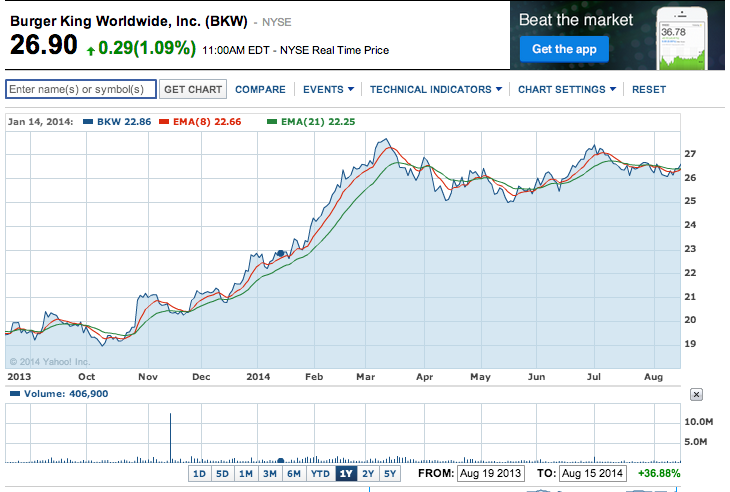 BKW has doubled since August of 2012, running up to a high “close” of $27.68 in March of this year. Since then, it has traded in a relatively narrow range.
BKW has doubled since August of 2012, running up to a high “close” of $27.68 in March of this year. Since then, it has traded in a relatively narrow range.
BKW has put in this impressive performance at the same time that news out of the Oakbrook, Illinois headquarters of McDonald's (MCD) has almost always been disheartening – starting with a November 2012 report of its first monthly sales decline in over nine years! I’ve actually felt badly for MCD management, because it feels as though nothing they are trying is working! Wendy’s (WEN) has performed better than MCD, but not nearly as well as BKW – as we can see in this graph:
Now consider this graph, which shows a dramatic improvement in “Adjusted EBITDA Margin” [3]between 2010 and 2012 – from 19% to 33%… and projects to continue trending higher toward (or above) the margins of MCD and Dunkin Brands (DNKN).
And how about Cash Flow? As the chart below illustrates, BKW has been de-leveraging and significantly improving Cash Flow!![4]
What accounts for these very eye-catching trends?
Well, its signature menu offering– the Whooper (57 years old now)[5] — has been reformulated through the years, but not recently. Therefore, that can’t account for this marked improvement in performance.
You might think that BKW’s recent introduction of “healthier” menu offerings should have helped it to compete with the tough competition represented by Panera Bread (PNRA
and Chipotle Mexican Grill (CMG)…. but the latest news on the BKW menu proves otherwise! Just this past week we read that BKW’s new healthier menu options haven't exactly set the world on fire! Specifically, the news wires were full of stories about the failure of a lower fat, lower calorie French fry item – “Satisfries”[6] – and the much heralded return of Chicken Fries[7] …. brought back to your local Burger King as a result of a storm of protest within social media by folks who cannot cope in life without a “Chicken Fries Fix”.
Here is a quick YTD look at BKW compared with the S&P 500 Index:
Once again we can see that BKW had a good “run up” into March and has been trapped in a range since then. That being said, it has outperformed the S&P 500 (YTD) by about 10%!
So if all of this solid performance has not been driven by any “Menu Blockbuster” or by some great new, amazing marketing campaign, what has been pushing the stock higher?
BusinessWeek’s July 24th edition suggests that the “secret” to this turnaround is that BKW is now “Run By Children”!! For those who didn’t see that article, BusinessWeek was not referring to toddlers, adolescents, or even teenagers… but rather to individuals now functioning within key management positions at BKW whose age is very young relative to the typical ages found within the ranks of U.S. corporate management.
Here are the ages of the current key leaders at BKW:
CEO 33 years old[8]
CFO 28 years old[9]
President for North American Operations 36 years old[10]
Head of Investor Relations 29 years old[11]
In order to help provide perspective here (since BKW is not actually in the Fortune 1000) if BKW did fall within that category of companies, CEO Daniel Schwartz would be the second youngest CEO, falling right behind Mark Zuckerberg (of “hoodie” and Facebook (FB) fame)!! It probably won’t surprise any of you that, according to “The Conference Board”, the average age of an incoming CEO at a S&P 500 Index company in 2013 was 53 years of age! Because of how startlingly young BKW’s management team is[12], BusinessWeek largely attributed the turnaround at BKW to the “kids”!!
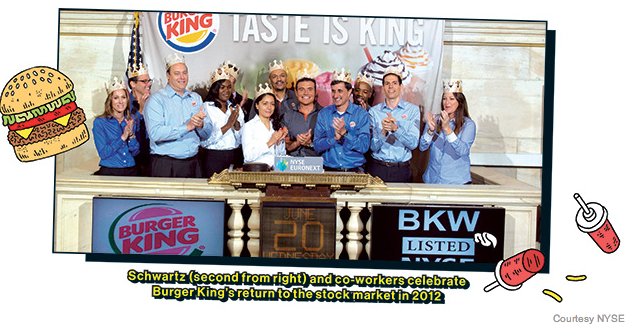
Here is a photo of BKW management at the NYSE. CEO Daniel Schwartz is the one second from the right side of the photo! (Photo courtesy of NYSE)
That article was effusive in praise for Schwartz’s efforts to learn the fast food business literally from “the bottom up”. After he was named CEO, Schwartz went to work at a Miami Burger King restaurant as a regular employee – getting trained in cooking the Whooper (he can do that within the prescribed 35 seconds), talking to both customers and employees, and even cleaning toilets[13]. I applaud him for taking that step, since it has been my contention for decades that our economy and society would be much better off and significantly stronger if (for example) technology CEOs would spend some time with the engineers in the design department and on the sales floors where their products are sold, the Comcast CEO would spend just one day in one of Comcast’s customer service locations and/or on the phone with disgruntled users, retail CEOs would spend at least one day per year at a cash register and/or a “Customer Service” counter, and even doctors would become (at least once every year) a patient in a medical office and at a hospital![14]
That being said, and with all due respect to both BusinessWeek and Mr. Schwartz, I thoroughly believe that the BKW turnaround is primarily a function of the business genius of Jorge Paulo Lemann, the 74-year old co-founder of 3G!! The son of a Swiss immigrant and a Brazilian mother, Lemann has managed to become the 34th wealthiest man in the world… and along the way he learned some important basic principles, including: a) After buying a company, cut all non-essential costs; b) Don’t fall into the trap of doing things the way they’ve always been done; find better ways; c) Once you’ve tested them, trust young executives and put them in charge at your firms (perhaps because they haven’t become captive to what everyone else has been doing for decades).
For those few who are not yet conversant with 3G: besides the 2010 purchase of Burger King (for around $4 billion), 3G was a key player in the H.J. Heinz Company takeover by Berkshire Hathaway (BRK-B). In fact, it was the folks at 3G who proposed the joint effort and have been put in charge of management, while Buffett put up enough cash for 50% ownership!
3G also holds a significant interest in Anheuser-Busch InBev, Lojas Americanas (largest non-food and online retailer in Latin America) and America Latina Logistica (largest railroad/logistics firm in Latin America). 3G operates out of both New York City and Rio de Janeiro.
If we look at what has been done at BKW, it is a great reflection of the 3G “way” –
1) Cut all unnecessary costs;
2) Try to instill in all employees an “Ownership Mentality” – that is, employees should be as careful with company funds and resources as they would be if they owned the company!
3) Think in new ways;
4) Keep trying to improve.
Here is a summary of what has been accomplished during the past two years:
I) Reduced overhead by selling “Company-Owned” stores
a) MCD owns about 19% of its almost 35,000 restaurants;
b) WEN owns about 18% of its 6,557 locations;
c) In 2010, BKW owned 11% of its 12,174 restaurants around the world.
d) Now, BKW owns just 52 stores, which it keeps for very good reasons: for the training of executives and managers and the testing of products!!!
e) What does the shrinking of “company-owned” restaurants mean for BKW?
i) Clearer focus;
ii) Lower capital expenses;
iii) Less leverage
iv) More franchise revenue!
II) As a part of I) above… but also reflecting 3G’s commitment to unrelenting Cost Reduction… the “headcount” at BKW has been reduced from 38,884 to just 2,425!!
III) As referred to at the beginning, Cost Reduction has even reached the “Board Room”:
a) The “3G Way” cost executives at these companies at least one esteemed “perk”:
i) At Anheuser-Busch (2008), executives were informed they would no longer receive free cases of beer!
ii) Executives at Heinz were forced to turn in their mini-fridges!
iii) It has been reported that many former executive perks at Burger King were eliminated, including offices so lavish that employees referred to them (not charitably) as “Mahogany Row”, and (thank heavens) the “Annual Party” at an Italian chateau that cost as much as $1 million each year.[15].
The bottom line is that 3G and the young team it has placed in charge at BKW have clearly gotten the attention of investors, employees, the press, and customers. I must add that their efforts were made much more noticeable and effective by decades of largely directionless management during the years that followed the initial years of leadership by James McLamore and David R. Edgerton – who expanded the chain to more than 250 locations before selling out to the Pillsbury Company in 1967.
At that time, many expected Pillsbury (and its deep pockets) to do wonderful things with Burger King. Unfortunately, such thoughts did not take into account the loss of entrepreneurial energy and commitment and the tendency for bigger corporations to often lose the focus necessary within a very competitive space (such as fast food). The Pillsbury management tried (at various points between 1967 and 1983) to restructure Burger King, but such efforts died on the vein when the one put in charge left after just a few years.
As a great example, a former MCD executive was brought in to run Burger King in 1978 (Donald Smith).[16] Smith’s “Operation Phoenix” was like a whirlwind of needed changes – from new standardized restaurant designs and updated franchise agreements to a broader menu (including the introduction of a “Burger King Specialty Sandwich line” in 1979,[17] and the addition of a breakfast line of items!). Unfortunately, Smith left for PepsiCo (PEP) in 1980! Operation Phoenix lost its momentum!
However, Norman Brinker stepped up as the next CEO and made his mark – including developing the first “Burger Wars Attack Ad”… starring a teenaged Sarah Michelle Gellar. He also introduced the Croissan’Wich in 1983. Once again, that CEO departed the boardroom… in this case jumping ship to become the head at Chili’s.
Just in case all of this had not sufficiently muzzled any creative spirit within Burger King, the British entertainment conglomerate Grand Metropolitan acquired Pillsbury in 1989… burying Burger King even deeper into a corporate morass. A series of uninspired and less than capable CEO’s formed what amounted to a “revolving door” of inaction and stagnation.
However, if you think that things couldn’t get any worse – you’d be wrong! Grand Met merged with Guinness[18] in 1997 to form Diageo![19]
The way I figure it, if someone had just had the gumption to introduce Harp and Guinness onto the Burger King menu, fast food chain history would have been transformed within the U.S.!
Alas, management was not that creative, and benign neglect continued to afflict the chain! By 2002, Diageo realized it didn’t know what to do with Burger King, so they started looking for a buyer. At that point, a few venture capital groups expressed interest, including a group led by TPG Capital (and Bain Capital). The negotiations were honing in on a price when, during due diligence, it become apparent that the decades of benign neglect within Burger King management had eviscerated a large number of franchisees. As a result, Diageo had to accept what was at least a $750 million lower price for Burger King than it had expected![20]
The following four years proved to be a greatly needed mini-Renaissance for Burger King. The arrival of management leaders who could not only identify the difference between a great hamburger and just a good one, but understood the importance of motivation, marketing, and menu pumped new vitality into the operation! Management hired a new ad agency, started a new ad campaign, revamped the menu, and led Burger King to a number of profitable quarters! A big part of the new marketing campaign was targeting males between 18 and 34 – offering them bigger, higher quality sandwiches that cost a bit more, but were worth it. The combined impact of new management, catchier marketing, more focus, and profitable quarters led to an extremely successful IPO in 2006! Things were looking fairly rosy… until… the Great Financial Crisis of 2007-09.
Talk about bad timing! Just as it seemed Burger King’s fortunes were about to move significantly higher, the foundation of the economy cracked and “the bottom fell out”. The very demographic group the chain had been successfully targeting suddenly became unemployed, underemployed or unemployable!
As a result, by 2010 TPG and its partners wanted to bail, and Jorge Paulo Lemann and his team at 3G were happy to oblige (for a price tag under $4 billion).
You already know the highlights of what has come since then. Here are just a few slides add detail to what has already been summarized above:

The "Four Pillars" strategy for BKW includes: 1) Improving the MENU; 2) Modernizing the restaurant locations and "IMAGE"; 3) Enhancing the MARKETING and COMMUNICATION; 4) Continually improving OPERATIONS.Here are signs of BKW growth.
- Trends are up!
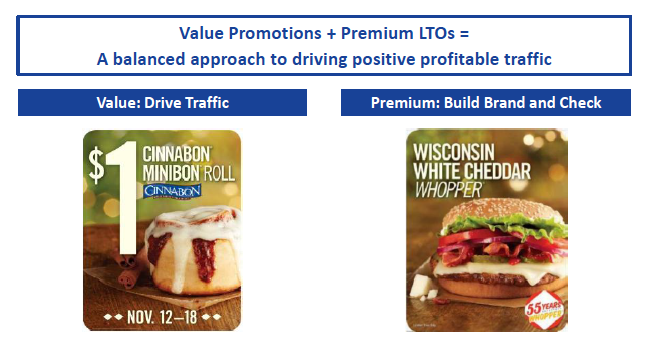
BKW "promotional" efforts are focused upon: 1) "Value" options that drive traffic (such as $1 Cinnabon); 2) "Premium" offerings (such as short-term offerings of special versions of the Whooper).
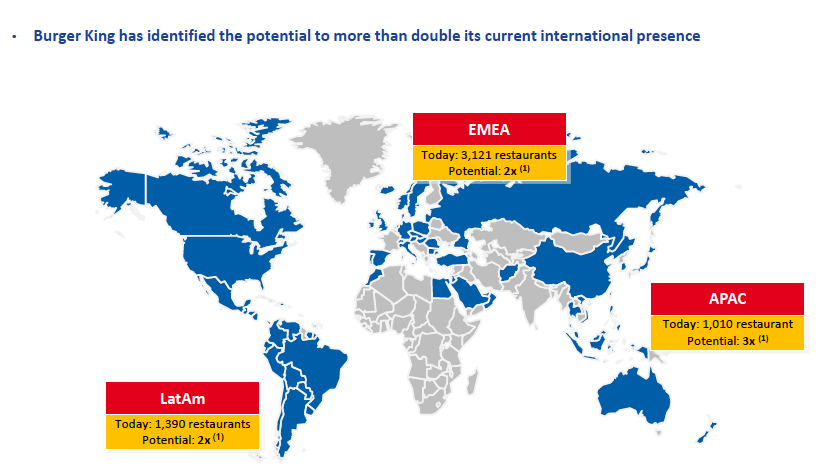
BKW has ambitious growth projections overseas -- expansion that they pursue by securing solid foreign "partners" for franchising and operations!
The summary of the “Operations Performance Index” seen above is just one more evidence that 3G knows what it is doing in managing the business. A tried and true principle from business school goes something like: “If you can't measure it, you can't evaluate it; and if you can't evaluate it, you can't improve it!” The “OPI” is a tool for evaluation and continual improvement! In addition, one of the most exciting things I discovered about Schartz and his team is that they hired 140 persons whose sole purpose in the company is to continually enhance the company’s profitability by coaching BKW franchisees regarding how to drive new business and make more profit! They deserve “special credit” for that strategic decision!
INVESTOR TAKEAWAYS:
I find it incredibly ironic that Burger King targeted the demographic of males between 18 and 34 during most of the first ten years of this century, and now that demographic is actually leading BKW from the top!
BKW is a compelling and exciting corporate story because it combines so many threads within its corporate history, from many “firsts” to a number of well-known lawsuits (well known in legal circles, at least) that have set precedents with regard to such issues as trademarks. It is also a story of how far an entrepreneurial company can fall when it gets sold to a (relative) corporate giant… a giant that cannot then find the right leadership for that company. An extremely telling BKW statistic is that Schwartz is the 21st CEO in Burger King’s sixty year history… an average of less than three years for each CEO (a revolving door indeed!).
At least now we know that the folks in charge are motivated, are not tied to how things have been done before, and are willing to make the often unpleasant, challenging decisions necessary to reinvigorate growth and profitability.
It is also quite evident and elementary that the most dramatic and quickly “fruitful” changes at BKW have already been made:
1) Reduce head count
2) Reduce company-owned stores
3) Reduce leverage
4) Dramatically lower operating costs
5) Dramatically increase profit and cash
That is why the stock has stalled where it is now on the charts. So why would anyone consider investing in BKW?
The answer is simple: The partners at 3G absolutely have an “end game” in mind with regard to BKW. It doesn’t matter that I don’t know precisely what that plan is. What does matter is that we can have confidence that they didn’t just buy BKW because they love having their names on the corporate report of the company that is “the Home of the Whooper”! Nor do they covet mahogany offices or gala $1 million holidays in Italy!
Instead, they are intent on making BKW stronger and more profitable, and I expect they will succeed.
Another reason to consider investing is Bill Ackman.
Ackman and Pershing Square Capital Management LP hold the second largest ownership stake in BKW. Anyone who knows Ackman knows that he invests only in companies through which he fully expects to make a profit. He obviously believes in 3G and in the team that is running BKW – most likely because they are a lot like him!
That being said, you may have to wait a long time for an investment in BKW to “payoff” as both 3G and Ackman hope it will!
With regarding to trading BKW, if the trading range that has held in place since mid-March continues, you could buy at the low of the range and sell as it approaches $27.50 to $28, or you could sell bull puts, or put on a covered call. Or, you can just drive over to your local BKW and enjoy a Whooper and some Chicken Fries!
DISCLOSURE: I don’t own BKW, but after years of avoiding the place, I now eat their food fairly regularly (not the Chicken Fries, of course). Nothing in this article is intended as a recommendation to buy or sell anything. Always consult with your financial advisor regarding changes in your portfolio – either subtractions or additions. And just one more helpful hint: Do not ever research and write an article about a fast food company when you are on a diet! I am desperate for a Whooper, Chicken Fries, and a Sundae!!
FOOTNOTES
[1] Now known as Star Wars Episode IV: A New Hope
[2] Followed in 2006 by a very successful IPO of Burger King stock, that tragically got clobbered during the 2007-2009 Financial Crisis and was discontinued (ie. the stock was removed from the NYSE in 2010, when the buyout by 3G Capital was completed!
[3] Earnings Before Interest, Taxes, Depreciation, and Amortization = EBITA
[4] It is worth noting that the slide is part of a 2013 presentation at the JP Morgan Leveraged Finance Conference. For that event, BKW was a great example of a firm focusing on REDUCING leverage.
[5] The Whooper was the first “big” fast food chain burger… predating the “Big Mac” by 10 years! Back in 1957, the Whooper sold for $0.37… adjusted for inflation, it would now be $3.27. The Whooper has become so synonymous with Burger King that BKW is called “Home of the Whooper!”
[6] SatisFries were introduced about a year ago… never heavily promoted (25% less calories; 20% less fat)… and didn’t “catch on” due to price point, positioning, and evident disinterest. Some stalwart BKW devotees called them “SaddestFries”. I give management kudos for letting franchisees decide whether to keep them in their menu or not! About 2,500 of the over 7,500 U.S. locations will be keeping Satisfries on the menu!
[7] Chicken Fries were introduced in 2005 and discontinued in 2012. As the BKW website describes them: “the fries are made with premium white meat chicken and coated with a breading seasoned with unspecified “savory” spices and herbs. You can dip them in BBQ, honey mustard, ranch, zesty, Buffalo and sweet and sour sauce.” Given the heavy breading and oil-based frying, I think of them as finger held chicken fat – a boon to cardiologists everywhere!
[8] Daniel Schwartz is the CEO – a 2001 graduate from Cornell University who stepped straight into the world of high finance, with a career moving from Credit Suisse/First Boston (M&A), to Altair Capital Management (a Connecticut Hedge Fund Mgr) , to 3G Capital as an analyst tied to 3G’s public and private equity investments. By January of 2008, Schwartz was named a “partner” within 3G and placed in charge of managing the private equity business. After 3G acquired Burger King in 2010, Schwartz was appointed as Executive Vice President/Deputy CFO. Two months later he became CFO. By June of 2013, he was named Chief Executive Officer.
[9] Joshua Kobza is CFO: he earlier work at SIP Capital (Brazilian private equity firm) and the Blackstone Group.
[10] Alexandre Macedo is President for North American Operations. Earlier, he founded True Marketing (consulting firm in Brazil) and was head of the Brahms Beer unit at AmBev
[11] Sami Siddiqui is head of Investor Relations.
[12] Particularly young for a 60 year old firm!!
[13] Please forgive me for being picky here! The article quotes him as proudly declaring that he “cleaned 15 toilets in two days!” C’mon now, Mr. Schwartz! I could clean at least 200 toilets in two days! “Toilets” are not the issue… it is cleaning a “Rest Room” that is challenging: thoroughly cleaning all toilets and urinals, washing the floor well, cleaning the sinks, replacing paper towels and bath tissue as needed, making sure all power dryers are functioning, etc.! If that was done well at least once each day, we’d all be better for it!
[14] As a corollary to this point, all Veteran’s Administration executives and staff should be required to secure all health care needs through a VA Hospital!! Things would get better very quickly!
[15] Any $1 million-plus annual expense that is for the sheer Dionysian pleasure of corporate executives without any discernible benefit to shareholders or the enhancement of corporate value should ex ante have been ruled out as a possibility by either corporate policy or specific board action.
[16] This was the year after Burger King engineered the first (and dare we say, fabulously successful) fast food cross-promotional contract with George Lucas and the first of his Star Wars epics!
[17] That sandwich line included new chicken and fish offerings… higher quality sandwiches specifically designed to appeal to adults between 18 and 34 years of age!
[18] As in the grand tradition and heritage of Arthur Guinness at St. James's Gate, Dublin
[19] As a public service, I provide you with the actual explanation of why on earth a British conglomerate and an Irish brewer would call their combined company “DIAGEO”. No, it did not result from a joint management meeting that went too late at night at a Dublin pub! Instead: “Diageo is an invented name which was created by the branding consultancy Wolff Olins in 1997. The name is composed of the Latin word “dies“, meaning day, and the Greek root “geo“, meaning world, and is meant to reference the company giving pleasure every day, everywhere.” Yes, leave it to folks from the British Isles to come up with that one!
[20] The fact that management was that out of touch with its own franchisees (the lifeblood of a chain) is a stark testament to just how far down into the cesspool of poor management Burger King had fallen by then!
Related Posts
Also on Market Tamer…
Follow Us on Facebook

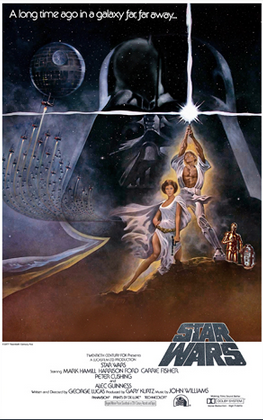


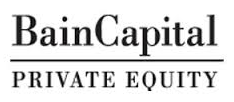
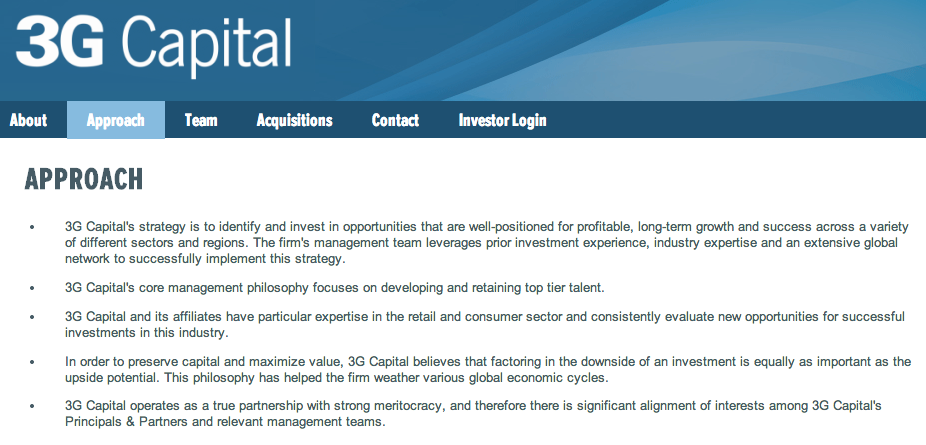
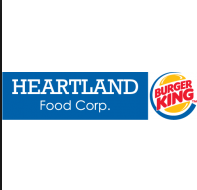
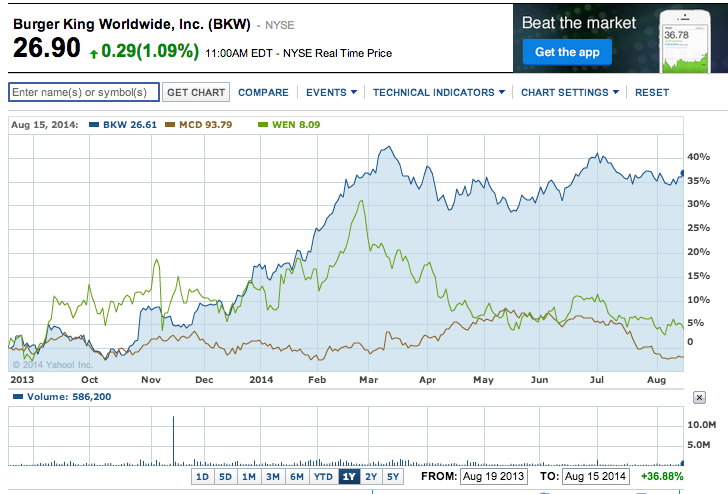
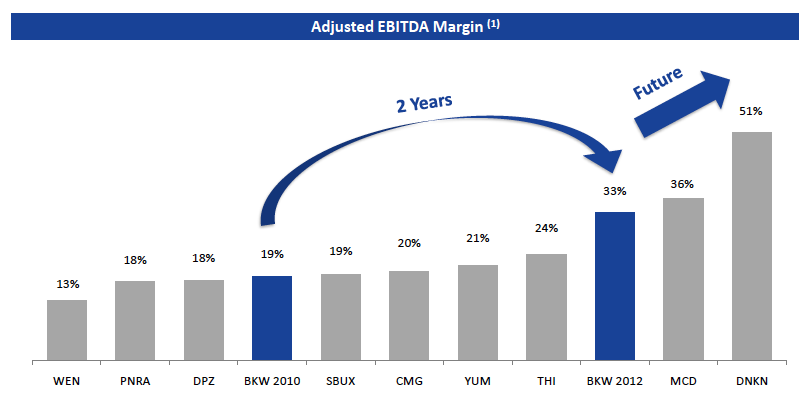
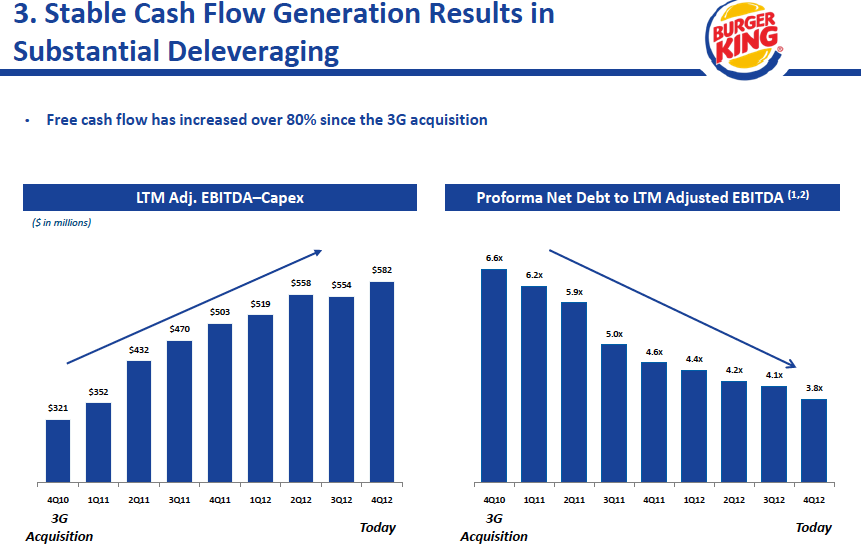
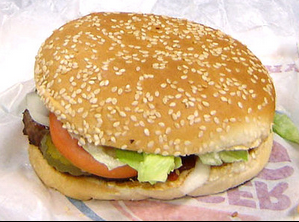

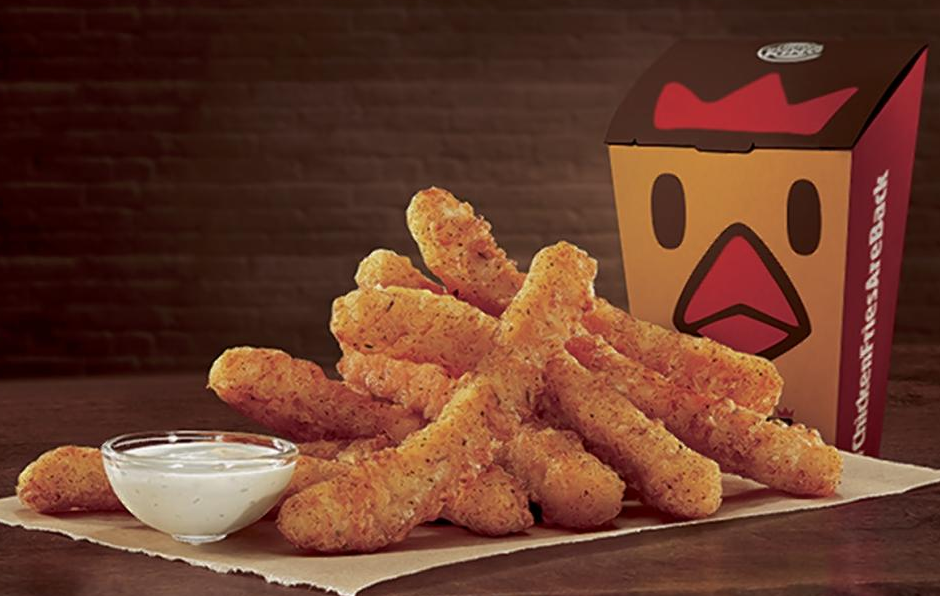
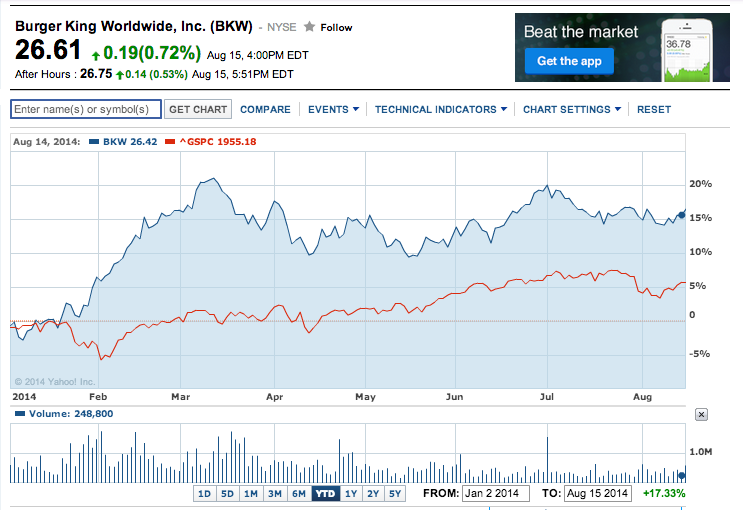

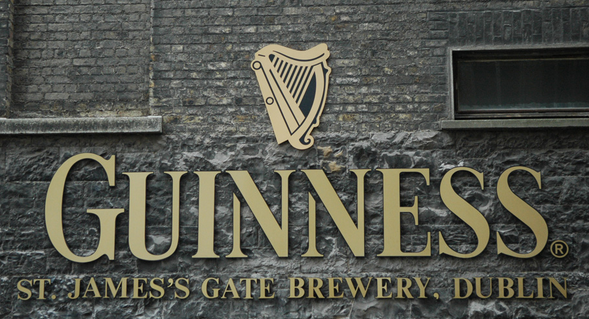
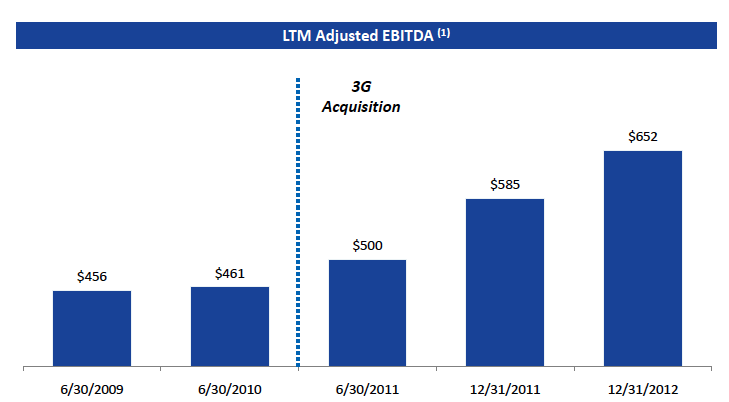
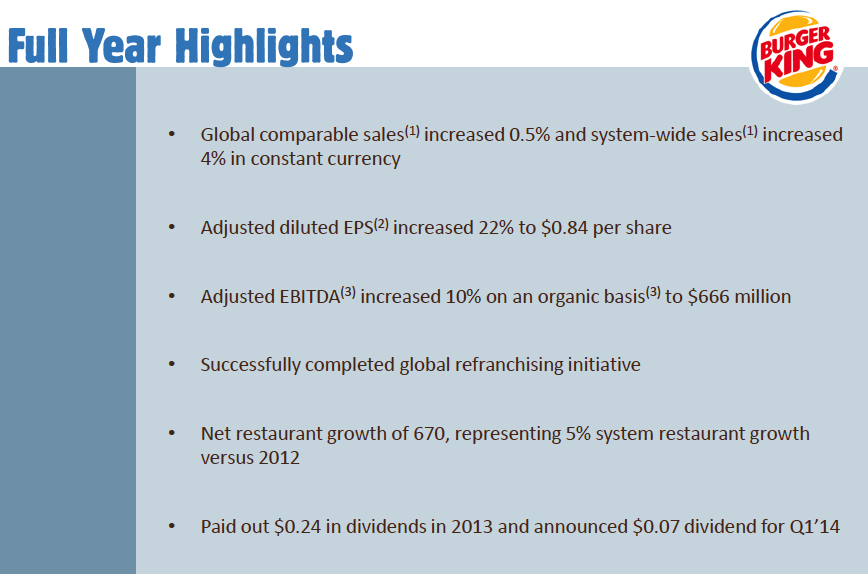
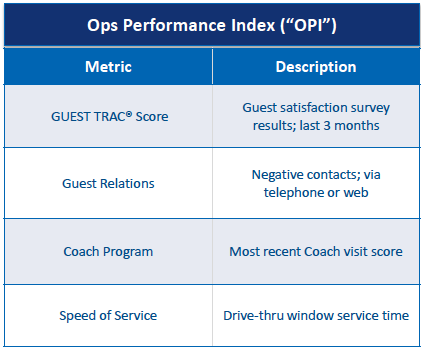
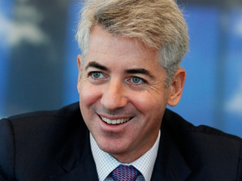
 We're About to Find Out the Answer to Warren Buffett's Pointed Question About Trump's Tariffs. Here Are 3 Stocks to Buy Depending on What That Answer Is.
We're About to Find Out the Answer to Warren Buffett's Pointed Question About Trump's Tariffs. Here Are 3 Stocks to Buy Depending on What That Answer Is.
